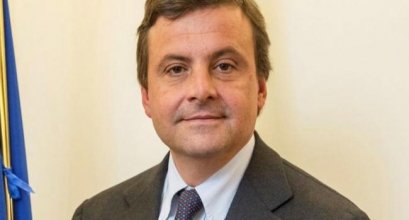Italy's Import Dilemma: Pipes or Terminals?
Italy's parliament is mulling whether to direct new investment at new LNG regasification capacity or on pipeline imports as part of a new, national energy strategy that is looking at new but secure sources of gas as demand grows.
Italy's environment and industry ministers, Gian Luca Galletti and Carlo Calenda (pictured, below), presented it to the industry and environment committees of the lower chamber of parliament.
The last energy strategy came out under the Monti government in 2013. This much-anticipated revision would bring it in line with more recent climate and energy objectives approved at the European and international level.
Calenda said in drafting the new energy strategy, that the government would have to reach a decision on whether to invest in pipeline gas based on fixed contracts with gas suppliers, or in “a strategy that rewards regasification” of LNG, in the light of the fact “the market is going towards a lower cost” of this type of resource. The preparation must also consider the implications of Nord Stream 2 and the “situation in Ukraine,” he added.
Speaking of pipeline gas import contracts nearing their expiration, Calenda said there was a need to consider alternative supply sources as there were some "risky components, primarily Algeria, which is a very important share of the market.”
He said Algeria as a supplier raises concerns: not only because its own gas demand is rising, but also because it is directing gas volumes “towards more remunerative markets, such as the Spanish LNG.” Italy would therefore see less gas from Algeria.
Moreover, he said flows from the Netherlands and Norway are set to reduce on the back of lower production in those countries. On the other hand, part of these volumes would be partially replaced by gas coming from Azerbaijan on the Trans Adriatic Pipeline (TAP), he said.
Calenda also highlighted how, on a international level, gas demand in Asia and Africa is set to rise in the coming years, which may result in “a supply issue” in Europe for countries like Italy, where despite weak economic growth, gas demand is forecast to increase.
'Liquidity corridor' to reduce PSV premium
Moreover, Calenda reiterated plans to create a so-called “liquidity corridor” aimed at easing the “bottleneck” in flows through Switzerland and thereby cut the premium of the Italian PSV hub over the Dutch TTF, which was around 13%, or €1.8/MWh in 2016, by way of increasing the flow of gas between the two markets, he said.

(Credit:Italian government)
The “liquidity corridor” plan, which had been anticipated in autumn, would work through the creation of a “regulated buyer” of gas transportation capacity from north European markets towards Italy, allowing players to access unused capacity on those routes, according to what reported on its website by Gas Intensive, an association representing high gas consumers in Italy.
Integrating renewables in the grid, a capacity market for electricity that would ensure stability of the system and achieving EU objectives on CO2 reduction, renewables and energy efficiency are other key themes the new strategy is looking to address, Calenda said.
The two ministers said they would update the committees on their work on the new energy strategy in early April, when they are due to present a more detailed plan.
Beatrice Bedeschi



